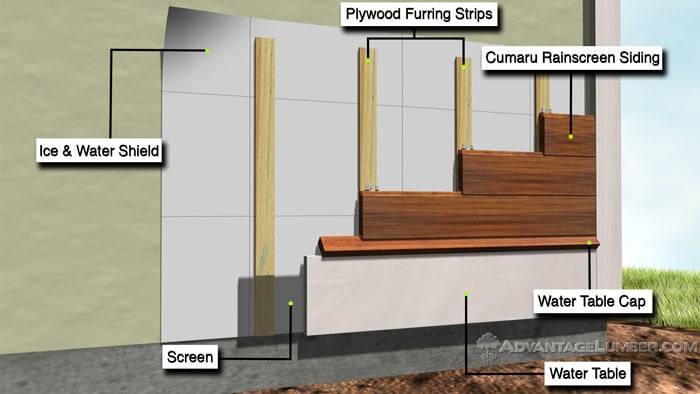
When it comes to siding maintenance, the biggest problems many homeowners worry about are mold and decay. Unfortunately, most people who undertake a siding renovation end up finding out first-hand how shoddy or rushed installation can create long-lasting problems. One of the main culprits for siding problems? Lack of adequate airspace.
Inadequate airflow results in moisture being trapped within the wall and the back of the siding. In severe cases, the moisture can penetrate through the housewrap and into the wall cavity. The liquid sits there with nowhere to go and will eventually cause rot and mold. Saturated housewraps and walls will facilitate in the deterioration of the siding and will only cause headaches and cost you more.
Allowing a plane for airflow is one of the best ways to lengthen the life of your siding. But, what’s the best solution?
What About Back-Priming?
You might think back-priming would be a simple solution to water intrusion. While applying a primer might work for softer woods such as pine and cedar, it is not an appropriate solution for harder woods such as Ipe, Cumaru, and Tigerwood. These exotic hardwoods have natural oils that form a barrier and make them naturally resistant to rot, mold and decay. These oils also make is virtually impossible for primer or any paint to hold.
Furring Strips Create a Drainage Plane
So, how do you create this air flow system? Install vertical furring strips over the drainage plane. Furring strips are thin strips of either metal or wood that the siding is attached too. These strips support the rainscreen siding and space the siding away from the drainage plane. The air pressure difference between the outside and the space behind the siding create a vacuum like effect. This effect will keep moisture out while retaining the beautiful look of your home’s exterior. After the siding is installed on the furring strips, make sure there are openings at the top and bottom of the siding for ventilation.
EXTRA PRO TIP: What About Bugs?
If you’re concerned about bugs or rodents making a nest within the walls of your home and your new siding, install a mesh screen at both openings. This will allow the air to flow freely while preventing those pesky little critters from moving in.
CONCLUSION
Remember, no siding is 100% waterproof. Proper installation is as critical as the kind of siding profile you choose. There are certain profiles that maximize airflow while decreasing the vulnerability to rot, mold, and decay. For instance, when rainscreen siding is installed correctly using hidden siding fasteners, there is no need to predrill or penetrate the wood at all. The fact rainscreen siding results in fewer points of intrusion means that a properly installed system will also increase the life of your exterior and allow the material to dry out evenly.
Even if you think your home is not susceptible to water intrusion, why take the risk? Investing in Advantage Rainscreen Siding is beneficial because of its longer life and seamless look. The custom profile of the Rainscreen siding ensure that less steps are needed to install, and these exotic hardwoods will outlast and outperform softer materials.
Great post, definitely agree that airspace is important. I’m sure the steps of installing siding are much more important for wood and lumber.